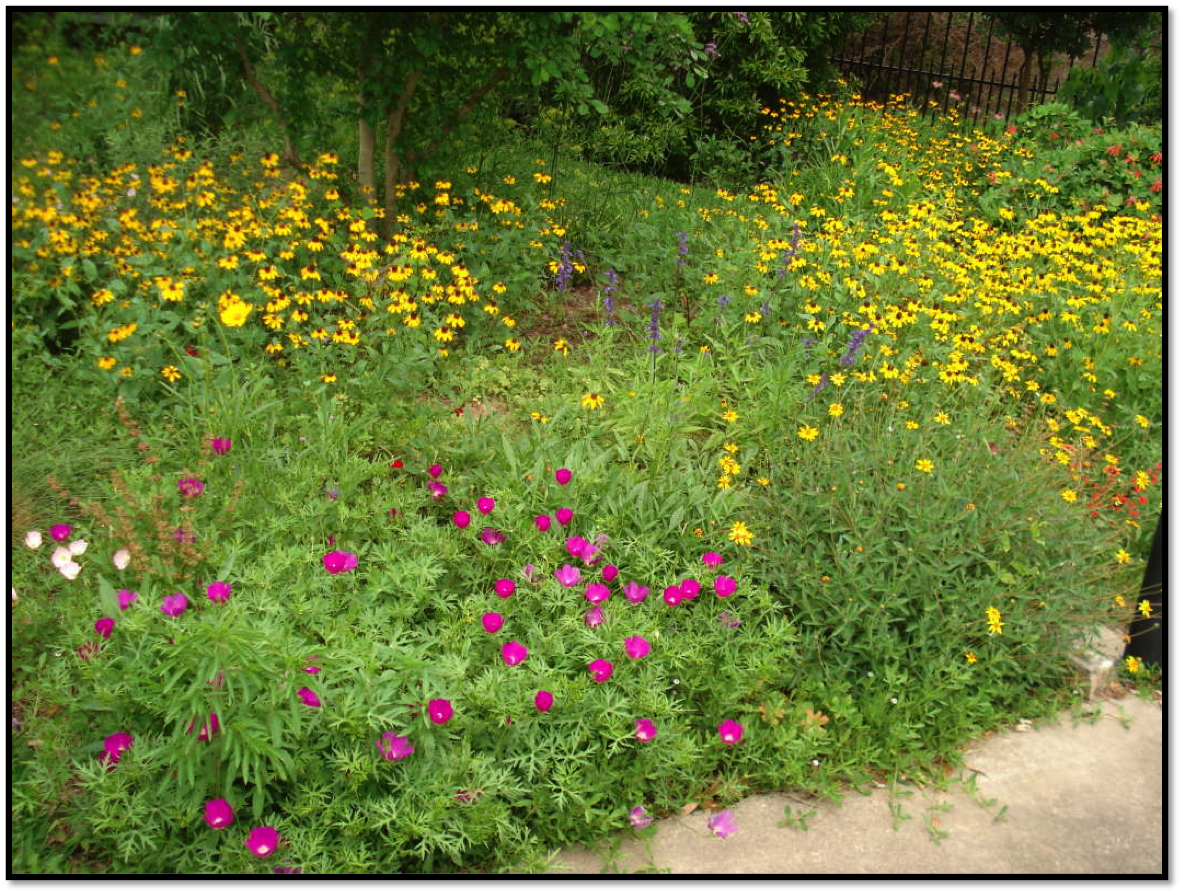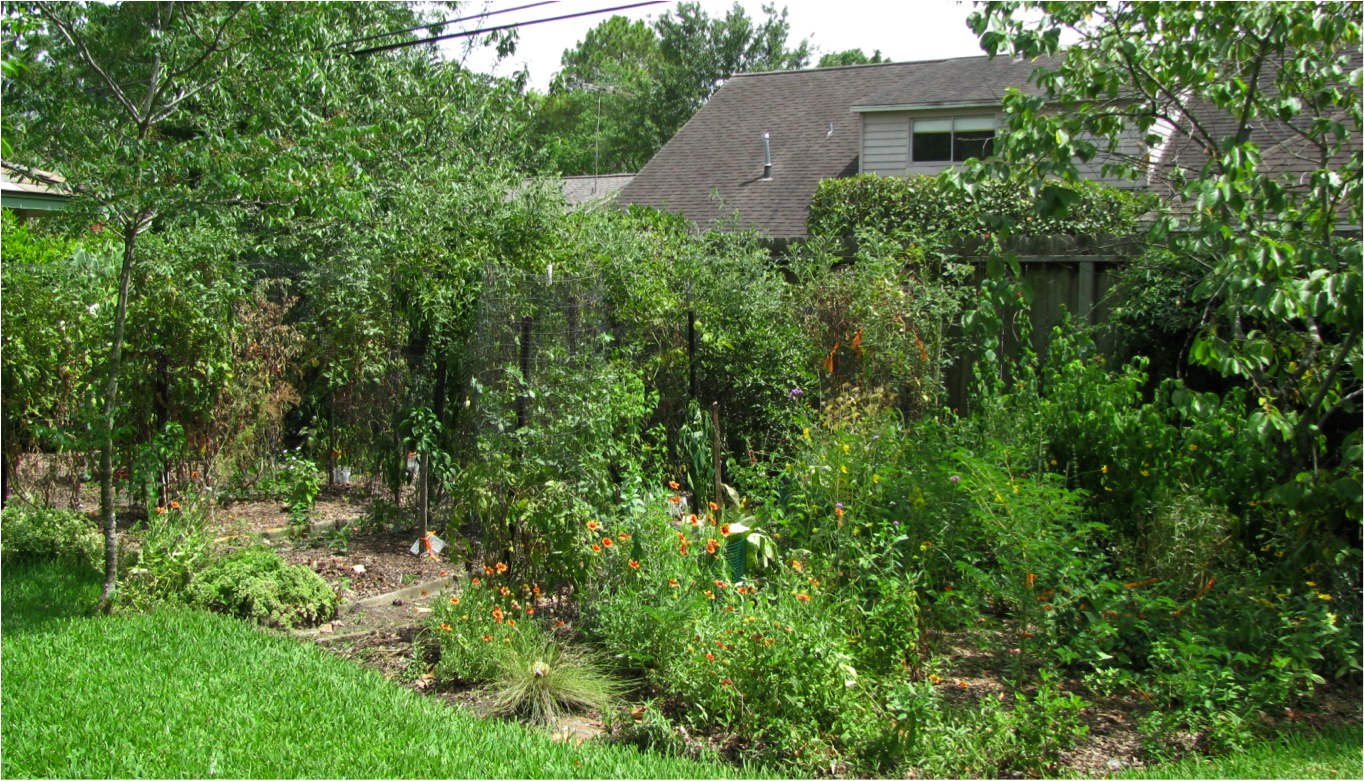A Lover of Wildflowers
For nearly 40 years, this traditional 100’ x 140’ yard has been becoming more of an oasis for birds, beneficial insects, and personal enjoyment and well-being. “Nothing happened overnight, the transformation evolved slowly over time.”
Approximately 30 years ago, the homeowners installed a 18’ x 26’ garden along their back fence line, half for organic vegetables, and half for native plants. They prepared the vegetable bed by using a French gardening technique, suitable for worn out soil since their subdivision was built on an old rice field and cattle ranch. They dug 1-ft trenches, transporting the dirt to an adjacent trench, working in bank sand, vermiculite, and gypsum to break up the tight, tight clay soil. Decades later, the homeowner still turns the vegetable bed twice a year, continuing to add rich compost made from grass clippings, tree leaves and all their household food scraps except for cooked garbage.
There weren’t many resources available when they began their project; their only wildflower book was Wildflowers of Louisiana and Adjacent States (1972) by Clair A. Brown . “The process was an evolution, but not an overnight evolution. Everything continues to change, nothing remains static.”
Overall, the result is a bird friendly yard that is interesting and a pleasure to visit.


